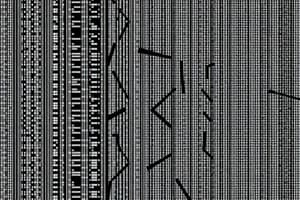Podcast
Questions and Answers
In layman terms, what is component analysis?
In layman terms, what is component analysis?
When you have a whole treatment package for a client and you figure out which variable maintains behavior.
What is the point of component and parametric analysis?
What is the point of component and parametric analysis?
It helps us understand the true maintaining variables of behavior.
What is comparative analysis?
What is comparative analysis?
Compares 2 or more distinctive treatments (similar to reversal) and treatments are not presented together.
What is parametric analysis?
What is parametric analysis?
What is the main goal of a component analysis?
What is the main goal of a component analysis?
Does component analysis enhance social validity by identifying ineffective and more effortful aspects of treatment?
Does component analysis enhance social validity by identifying ineffective and more effortful aspects of treatment?
What does it mean to consider the additive effects of component analysis?
What does it mean to consider the additive effects of component analysis?
What is the multiplicative interaction between components?
What is the multiplicative interaction between components?
What is the difference between necessary and sufficient components?
What is the difference between necessary and sufficient components?
Can you have behavioral and sequence effects with component analysis?
Can you have behavioral and sequence effects with component analysis?
What are the two methods for component analysis?
What are the two methods for component analysis?
What is the drop out method?
What is the drop out method?
What is an advantage of drop out component analysis?
What is an advantage of drop out component analysis?
What are the disadvantages of the drop out method?
What are the disadvantages of the drop out method?
What is the add in method of component analysis?
What is the add in method of component analysis?
What are the advantages of add in?
What are the advantages of add in?
What are the cons of add in?
What are the cons of add in?
What designs can you use for component analysis?
What designs can you use for component analysis?
What is the most powerful design?
What is the most powerful design?
When should you conduct a component analysis?
When should you conduct a component analysis?
What is parametric analysis?
What is parametric analysis?
You are working with a child who engages in stereotypy in the form of hand-flapping. What analysis are you using when you alternate the treatments?
You are working with a child who engages in stereotypy in the form of hand-flapping. What analysis are you using when you alternate the treatments?
What analysis is being used when you implement DR plus fixed time to increase compliance?
What analysis is being used when you implement DR plus fixed time to increase compliance?
What analysis are you conducting when you want to evaluate whether $10 or $20 is more effective than $5?
What analysis are you conducting when you want to evaluate whether $10 or $20 is more effective than $5?
Flashcards are hidden until you start studying
Study Notes
Component Analysis
- Involves evaluating a complete treatment package to identify which elements effectively maintain behavior.
- Enhances social validity by pinpointing ineffective aspects of treatment that require more effort.
- Focuses on the functional relationship between the dependent variable (behavior) and the independent variable (treatment).
Parametric Analysis
- Aims to determine the optimal level of an independent variable to achieve desired behavioral outcomes.
- Involves comparing different intensities, durations, or characteristics of the same treatment component.
- Addresses relationships between varying degrees of treatment and their effects on behavior for specific individuals or groups.
Comparative Analysis
- Compares two or more different treatments applied separately, allowing for differentiation in effectiveness.
- Similar to reversal designs, it helps determine which treatment yields better results based on observed behaviors.
Methods of Component Analysis
- Add-in Method: Gradually integrates components of a treatment package while monitoring behavioral changes. Determines necessity and sufficiency of each component.
- Drop-out Method: Begins with the full treatment package and removes components systematically to identify essential elements. A critical component is deemed necessary if its removal leads to decreased effectiveness.
Interaction Between Components
- Additive Effects: Each component must function independently to ensure accurate evaluation.
- Multiplicative Interaction: Actions of one component may depend on or amplify the effects of another component, highlighting interdependence.
Necessary vs. Sufficient Components
- Necessary Components: Must be present for the treatment to work effectively on target behavior.
- Sufficient Components: Refers to the level of a component needed for the treatment to be effective.
Behavioral and Sequence Effects
- Component analysis can uncover immediate improvements in target behavior or subsequent effects due to the order of component implementation.
Design Options
- Various experimental designs can be used for component analysis, including multiple baselines (MB), reversals, and alternating treatments. An effective approach uses combinations to minimize confounding variables.
Ideal Designs
- An add-in reversal or alternating treatment design is the most powerful as it reduces risks of confounds from combining treatment effects.
Clinical Relevance
- Component analysis should be conducted when therapy is costly or demanding, and for understanding treatment effectiveness and underlying mechanisms.
Case Examples
- Comparative Example: Alternating treatments of response interruption plus redirection against non-contingent reinforcement (NCR) for a child displaying stereotypy.
- Component Example: Implementing differential reinforcement followed by a combination treatment to increase compliance.
- Parametric Example: Systematically testing the effects of different monetary rewards on improving exercise habits.
Studying That Suits You
Use AI to generate personalized quizzes and flashcards to suit your learning preferences.




